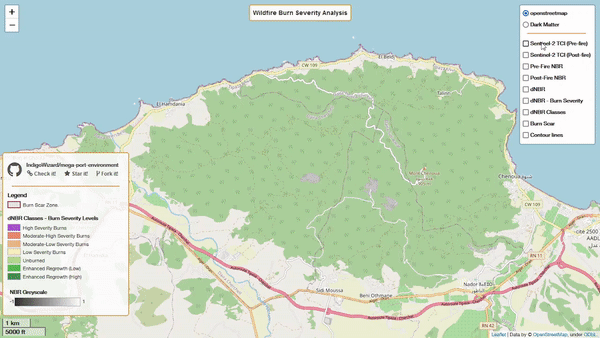v0.1.0-beta
Pre-releaseWildfire Burn Severity Analysis - Release 0.1.0
Purpose
The project has been available on GitHub for some time now and it lacked a formal version number and release notes. This release aims to establish version 0.1.0 for the existing project and does not encompass any upgrades or new features. Additionally, this release serves as a precursor to a major upgrade planned for the near future which is based on Streamlit framework for a more user-friendly experience.
Project Description
Python script that leverages Google Earth Engine python API, along with Folium and geemap, to assess surface areas affected by wildfires. It relies on Normalized Burn Ratio (NBR) to highlight affected areas and estimate burn severity levels.
The project's primary use-case revolves around the analysis of the wildfire that occurred in Mount Chenoua, Tipaza, Algeria, from August 14th to 16th, 2022. The generated burn severity map provides valuable insights into the extent of damage caused by the wildfire.
Features
- Utilizes Google Earth Engine Python API for remote sensing via Sentinel-2 satellite imagery.
- Calculates the Normalized Burn Ratio (NBR) to assess burn severity levels.
- Renders an interactive map with Folium to visualize the analysis results.
- Delineates burn scar areas
- Provides a static web app for easy access to the burn severity analysis results with minimal interaction (here.)
How to Use
If you wish to use or contribute to this project, here are the necessary steps:
- Sign up for a Google Earth Engine account.
- Install the gcloud CLI for authentication.
- Ensure that you are using Python 3.9 or higher.
- Install project dependencies from the
requirements.txtfile using the following command:
conda install --file requirements.txt- Modify the script to use your desired satellite imagery data for the pre-fire and post-fire periods, ensuring that the images have less than 10% cloud coverage.
- Define your Area of Study (AOS) by specifying its coordinates in the aos.py file.
Credits
This project was created using the following technologies and datasets:
Project by IndigoWizard.
